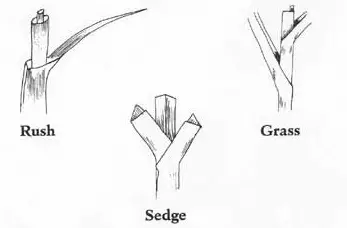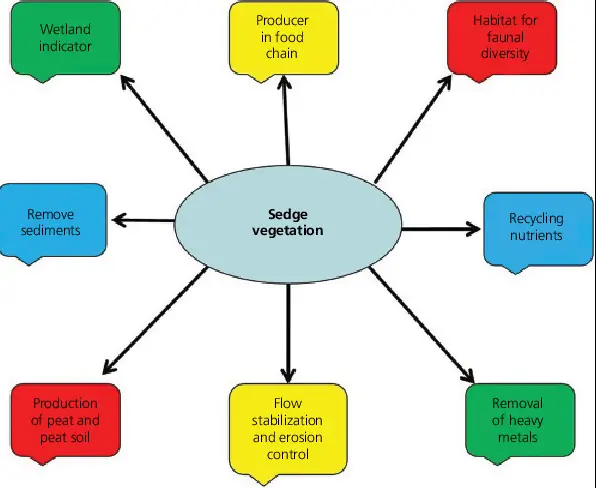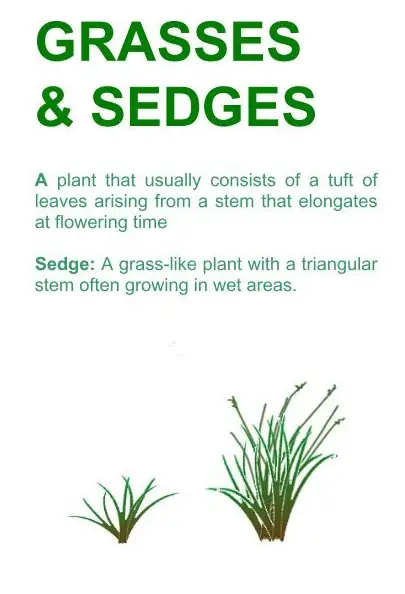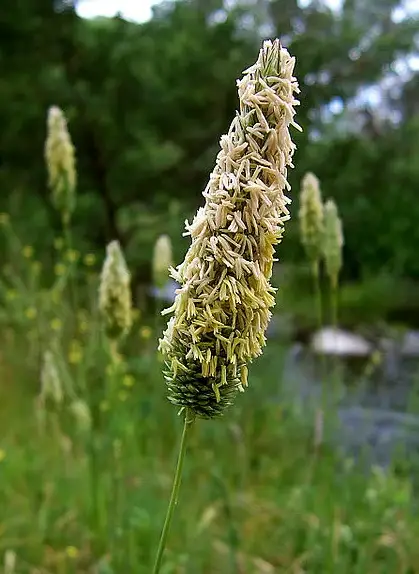Grass and sedge are common sights in landscapes, both natural and designed, yet their differences are often overlooked or misunderstood. Each plays a vital role in its ecosystem and has distinct characteristics that set one apart from the other. Identifying these can help in understanding their ecology and utility in various environmental contexts.
The main difference between grass and sedge lies in their physical structure. Grasses are characterized by their hollow, jointed stems and leaves that grow in opposing pairs. Sedges, on the other hand, have solid, triangular stems with leaves that grow in three ranks. This fundamental distinction is crucial for proper identification and understanding their diverse roles in nature.
Grasses and sedges are adapted to a wide range of climates and conditions, found everywhere from lush gardens to wild marshes. They influence biodiversity, soil stability, and water filtration. Recognizing their differences not only enhances landscape aesthetics but also supports environmental conservation efforts.

Definitions and Basics
What is Grass?
Grass is a common term used to describe species within the Poaceae family, one of the most widespread and diverse plant families on the planet. Grasses are vital to human agriculture and are found in various environments from lawns to fields, and even marshes. They share some key characteristics:
- Jointed stems called culms
- Narrow leaves with parallel veins
- A growth habit that starts from the base, allowing for continual growth after cutting
What is Sedge?
Sedge refers to plants in the Cyperaceae family, which are often mistaken for grasses but have distinct differences. Sedges are mostly found in wetlands and moist habitats where they play significant ecological roles. The defining features of sedges include:
- Triangular stems which are solid and not hollow
- Leaves that are arranged in three rows
- Growth patterns that can vary from grasses, often more suited to saturated soils
Physical Characteristics
Leaf Structure
The leaf structure of grasses and sedges is one of the easiest ways to distinguish between the two:
- Grass leaves are typically flat and thin with a central vein that runs the length of the leaf. They are usually soft and flexible.
- Sedge leaves are stiffer, often curling into a tube-shape. Their arrangement in three rows gives them a more textured feel.
Root Systems
Root systems in these plants are crucial for their survival and environmental impact:
- Grass roots are generally fibrous, creating a thick mat that helps in soil stabilization and absorption of nutrients.
- Sedge roots can be similar, but many species have rhizomes that help them spread and survive in difficult conditions.
Seed Head Formation
Seed heads are a critical reproductive feature for these plants:
- Grasses produce seed heads from the tops of their stems; these can be spiky, fluffy, or segmented.
- Sedges have seed heads that often appear as spikes or clusters, which are usually less showy than those of grasses.

Habitat Preferences
Grass Habitats
Grasses are incredibly adaptable and can thrive in a variety of environments:
- Prairies and plains
- Savannahs
- Mountain slopes
- Urban areas, as part of lawns and ornamental gardens
Sedge Habitats
Sedges prefer environments that are often too challenging for many grass species:
- Wetlands such as marshes and bogs
- Forest floors, where moisture is abundant
- Alpine regions where they can be a dominant vegetation type
Environmental Impact
Grass Role in Ecosystems
Grasses are not just aesthetically pleasing but serve pivotal roles in their ecosystems:
- Soil preservation through their extensive root systems
- Supporting biodiversity by providing habitat and food for numerous species
- Regulating water cycles through their impact on runoff and evaporation
Sedge Contributions to Biodiversity
Sedges enhance biodiversity through:
- Habitat creation: Their dense growth can provide excellent shelter and nesting opportunities for various wildlife.
- Soil health: They contribute to the nutrient cycling and soil structure in their habitats.
- Water filtration: Sedges play a significant role in purifying waterways by trapping sediments and pollutants.

Practical Uses
Grass in Agriculture
Grass plays a pivotal role in agriculture, serving multiple functions:
- Forage Production: Grasses like alfalfa, Bermuda, and fescue are crucial for feeding livestock due to their nutritional content and digestibility.
- Crop Rotation: Farmers use grass crops to manage soil fertility and control erosion. This practice helps break pest cycles and maintains soil health.
- Biofuel Production: Species such as switchgrass are increasingly cultivated for bioenergy, offering an environmentally friendly alternative to fossil fuels.
Sedge in Landscaping
Sedges have become popular in landscaping due to their aesthetic appeal and ecological benefits:
- Diversity in Design: With their varied textures and colors, sedges add depth to garden designs.
- Low Maintenance: They require less mowing, fertilizing, and watering compared to traditional lawn grasses.
- Wildlife Support: Providing habitat and food for local wildlife, sedges enhance the ecological value of gardens and parks.
Growth Conditions
Optimal Conditions for Grass
To thrive, grasses require specific conditions, tailored to their species:
- Sunlight: Most grasses need full sun but some tolerate partial shade.
- Soil Type: Well-drained soil is ideal, though some species can adapt to poor conditions.
- Watering: Regular watering helps maintain lush, healthy grass, especially during dry periods.
Sedge Growth Requirements
Sedges, while versatile, have their own set of requirements:
- Moisture: Many sedge species thrive in moist or even wet conditions, unlike many grasses.
- Shade Tolerance: Sedes are generally more shade-tolerant, making them suitable for forested or shaded gardens.
- Soil Adaptability: They can grow in a range of soil types, from sandy to clay.
Identification Tips
Visual Differences
Recognizing grasses and sedges visually involves noticing:
- Stem Shape: Grasses have round, hollow stems; sedges have solid, triangular ones.
- Leaf Arrangement: Grass leaves alternate along the stem, while sedge leaves emerge in threes from the base.
Tactile Tests
Feeling the plants can also help distinguish them:
- Feel the Stem: Rolling the stem between your fingers, grass will feel smooth, while a sedge’s triangular stem is noticeable.
- Texture of Leaves: Sedge leaves are generally rougher and stiffer than the typically soft grass leaves.
Care and Maintenance
Managing Grass
Effective grass care involves:
- Mowing: Keeping grass at the ideal height based on its type encourages healthy growth and deters pests.
- Fertilizing: Proper nutrition, especially nitrogen, is crucial for lush, green grass.
- Watering: Consistent watering, deep but infrequent, promotes strong root development.
Sedge Care Techniques
Maintaining sedges is straightforward:
- Pruning: Cutting back in early spring facilitates fresh growth and maintains tidiness.
- Watering: While sedges are drought-tolerant, consistent moisture supports optimal health.
- Weeding: Keeping the area around sedges clear of weeds ensures they aren’t outcompeted for resources.
Economic Significance
Grass Industry Impact
The grass industry significantly influences the economy through:
- Agricultural Products: Hay and silage production for livestock.
- Landscaping Services: Lawns and commercial landscapes drive substantial revenue in the horticulture sector.
- Sports and Recreation: Golf courses, sports fields, and parks rely on high-quality grasses for surface integrity and aesthetics.
Sedge Economic Uses
Sedges contribute economically in less direct but important ways:
- Craft Industries: Baskets and mats woven from sedge varieties provide income for artisan communities.
- Ecological Services: Their role in wetland conservation and water filtration can mitigate flooding and clean water sources, reducing environmental cleanup costs.
Frequently Asked Questions
What defines a grass?
Grasses belong to the Poaceae family, notable for their jointed, hollow stems and leaves that grow alternately, wrapping around the stem. This structure allows for flexibility and resilience in various environments.
How do you identify a sedge?
Sedges can be identified by their solid, triangular-shaped stems that feel rough on the edges. Their leaves are arranged in sets of three, creating a distinct three-dimensional appearance.
Are sedges beneficial for landscaping?
Yes, sedges are highly beneficial for landscaping due to their adaptability and low maintenance requirements. They can thrive in difficult soil conditions and often require less care than traditional grasses, making them ideal for sustainable landscaping practices.
Can grasses grow in wet areas?
While most grasses prefer well-drained soil, certain species are well-suited for wet areas. These grasses, often found in marshes and wetlands, play a crucial role in water filtration and shoreline stabilization.
What are the economic uses of sedges?
Sedges are used in various economic applications, including basket weaving, roofing, and as eco-friendly garden plants. Their durability and unique aesthetic qualities make them valuable in craft and landscape design.
Conclusion
Understanding the differences between grass and sedge is more than an academic exercise; it has practical implications in agriculture, landscaping, and environmental conservation. By distinguishing these two types of plants, we can better appreciate their roles and effectively utilize them in our surroundings.
As we continue to explore and interact with natural environments, appreciating the subtle distinctions between plant types like grass and sedge enriches our understanding of biodiversity and ecosystem dynamics. This knowledge not only enhances our gardening practices but also supports broader environmental management and conservation efforts.

